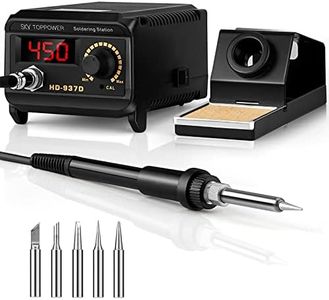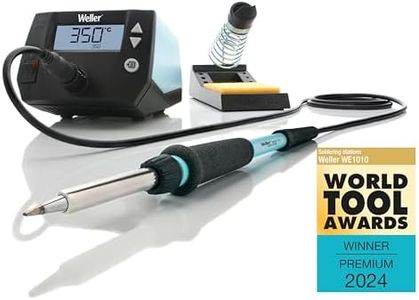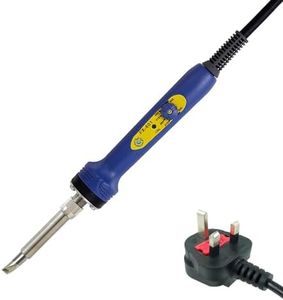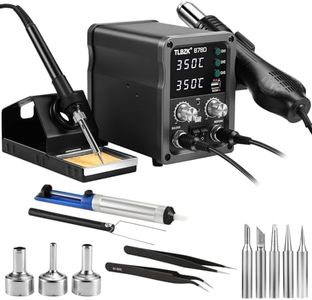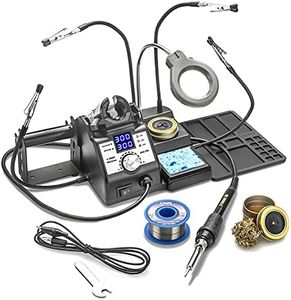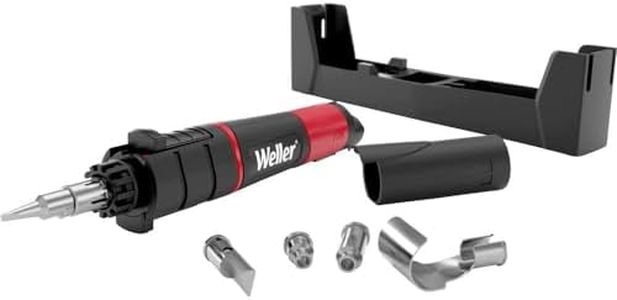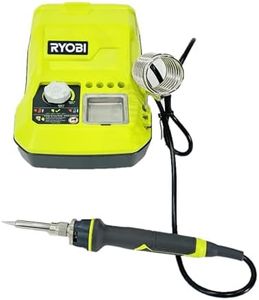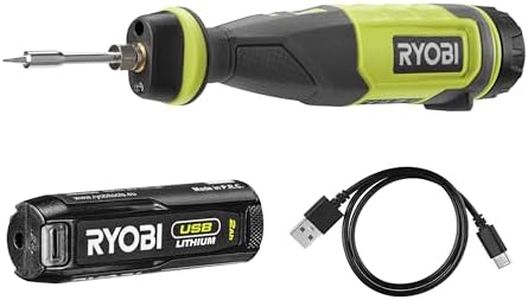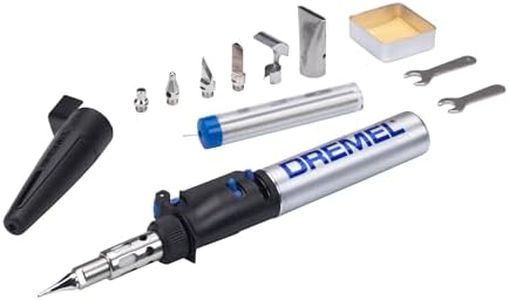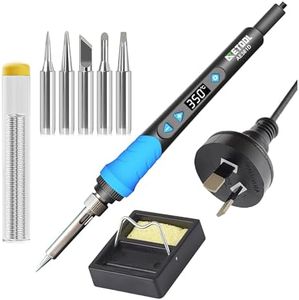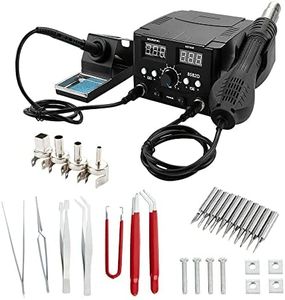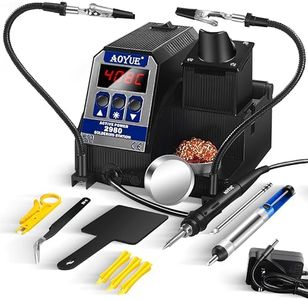We Use CookiesWe use cookies to enhance the security, performance,
functionality and for analytical and promotional activities. By continuing to browse this site you
are agreeing to our privacy policy
10 Best Soldering Guns
From leading brands and best sellers available on the web.Buying Guide for the Best Soldering Guns
Choosing the right soldering gun can make your electronic projects, repairs, or crafting work much more efficient and enjoyable. The key to picking the best soldering gun for your needs is to understand the basic features that matter most, and how they match up with the kinds of tasks you want to accomplish. It's about balancing power, comfort, and ease of use, especially if you're new to soldering or planning to work on different types of jobs.Wattage (Power)Wattage refers to the power output of the soldering gun, and it directly affects how quickly the tip heats up and how well it maintains its temperature during use. Higher wattage means faster heating and better performance on tougher or larger connections, but it's not always necessary for smaller jobs. Soldering guns typically range from about 100 to 240 watts. Lower wattage is usually enough for fine electronics work, while higher wattage is best for heavy-duty tasks like soldering thick wires or metal parts. Choose the wattage based on the size and type of jobs you plan to tackle most often.
Tip Type and SizeThe tip is the part of the gun that transfers heat to the solder. Tip type and size can make a significant difference in the precision and effectiveness of your work. Fine, pointed tips are great for small and detailed jobs, like circuit boards, while broader or chisel-shaped tips are better for larger connections or cables. Consider what kind of work you'll do most often—if you need flexibility, pick a soldering gun compatible with interchangeable tips.
Heat-Up TimeThis spec tells you how quickly the soldering gun reaches its operating temperature after being turned on. Faster heat-up times mean less waiting and more efficient work, which is important if you're working on multiple joints or in time-sensitive situations. For occasional or simple work, a slightly longer heat-up time may be acceptable, but frequent users might prefer a gun that heats up in seconds.
Temperature ControlSome soldering guns let you adjust the operating temperature, while others have a fixed setting. Adjustable temperature control is valuable if you plan to work on different materials or need to avoid overheating sensitive components. If your projects are diverse, opt for a model with this feature. For single-purpose or basic repairs, a fixed-temperature gun can be simpler and perfectly adequate.
Ergonomics and WeightComfort matters, especially during longer sessions. The weight and shape of the soldering gun affect how easy it is to handle and control. Lightweight, well-balanced models help reduce fatigue and improve accuracy, which is especially important for detailed work. Try to choose a model that feels comfortable to hold, particularly if you expect to use it for parts of an hour at a time.
Corded vs. CordlessSoldering guns can come with a cord for continuous power or be cordless for greater portability. Corded models offer consistent heat without worrying about batteries, making them suitable for stationary workbenches. Cordless models are convenient for on-the-go repairs but may have a limited runtime. Pick based on whether you'll mostly work in a set location or need the freedom to move around.
